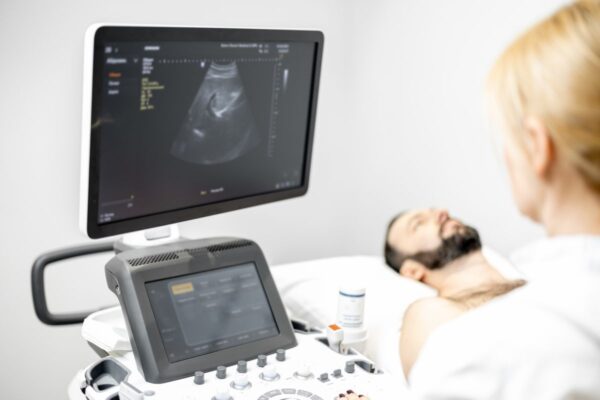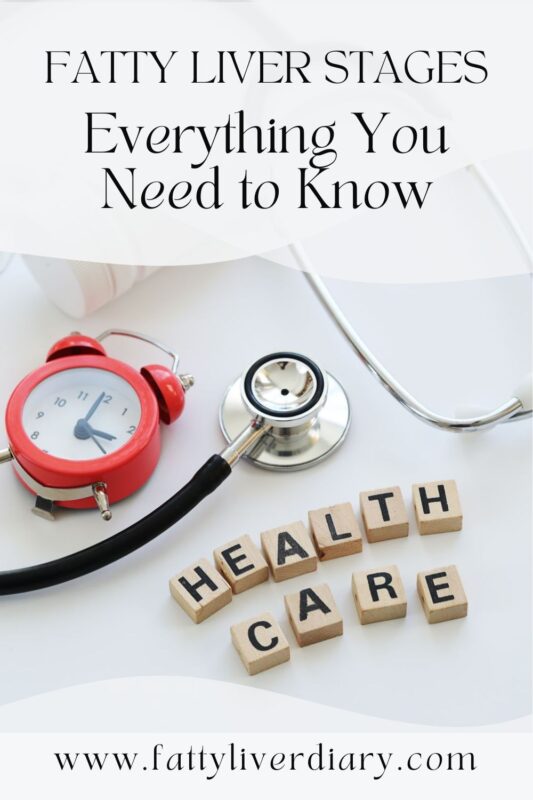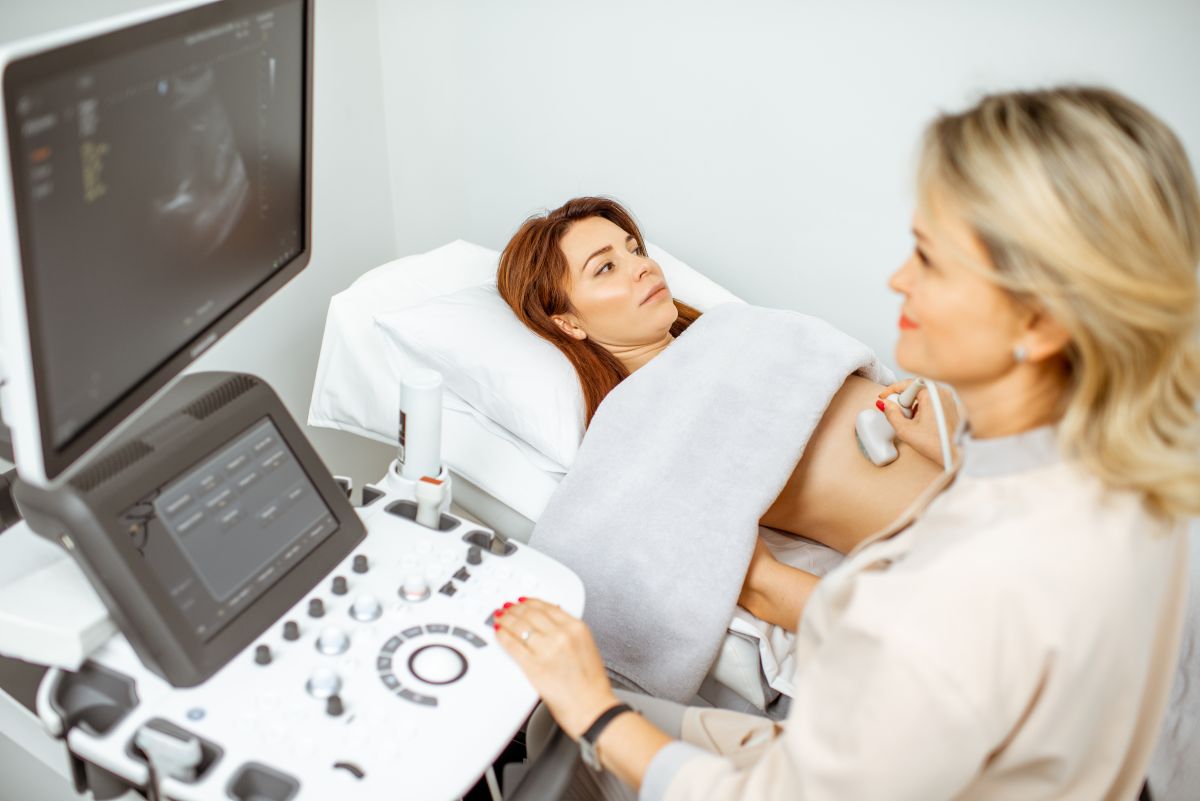Fatty liver disease can be broken up into different grades of severity with the lower numbers being the least serious.
Grades 1 through 3 of fatty liver disease range from mild to severe, and the higher the number, the more time will be required to reverse it.
In this article, we will learn what each stage or fatty liver grade means, what are the differences between these three grades and other things that you might be interested in.
What Is Grade 1 Fatty Liver?

Grade 1 fatty liver is the mildest version of fatty liver disease but still indicates that your liver has an unhealthy amount of fat cells.
Livers with five to thirty-three percent of fat cells contributing to the overall weight of the organ are considered to have grade 1 fatty liver disease.
With grade 1 fatty liver disease, the excess fat cells reside on the outside of the organ, accumulating in clusters on its surface. While unhealthy, the fat cells are not yet numerous enough to impact the function of the liver itself.
Most of the time, doctors will be able to detect grade 1 fatty liver disease with an ultrasound and it’s usually diagnosed during routine check-ups, as there might be no symptoms.
Even blood test results can come back normal with Stage 1 Fatty Liver, so it’s pretty difficult to catch it in most cases. But if you do, it’s also the easiest to reverse with the proper lifestyle changes.
What Is Grade 2 Fatty Liver?
A Fatty Liver is considered to be Grade 2 if the fat cells in your liver make up thirty-four to sixty-six percent of your liver’s weight.
This condition is considered moderate and can progress from grade 1 fatty liver if the mild form is left untreated.
Unlike grade 1 fatty liver which doesn’t affect the inner functioning of the liver, grade 2 fatty liver displays fat cells that begin to invade the liver cells and create ballooning pockets of fat.
This will slow down the liver’s ability to metabolize the nutrients from the stomach and intestines and get rid of any toxins in the body.
Inflammation of the lobes of the liver themselves may also begin to occur during grade 2 fatty liver disease. Also, blood test results might come back abnormal and you might have one or more symptoms associated with NAFLD.
This is the stage around which I was diagnosed and I still managed to reverse my condition, so it’s definitely possible. It might take a bit longer to reverse from this stage, but for most people, this shouldn’t be a problem.
What Is Grade 3 Fatty Liver?
Grade 3 fatty liver disease is considered the most severe and final stage of fatty liver before more severe problems might develop.
When the overall weight of the liver is comprised of more than two thirds of fat cells, the diagnosis is grade 3 fatty liver disease.
Along with all of the symptoms of grade 2 fatty liver disease, grade 3 fatty liver disease is also denoted by chronic inflammation of the liver.
The difference between the inflammatory stages of grade 2 and grade 3 fatty liver is that grade 2 can be accompanied by a mixture of episodic and chronic inflammation, while grade 3 inflammation is constant.
While there is no direct medication to treat fatty liver disease, all measures including lifestyle changes – especially switching to a healthy diet and exercising – are mandatory to get back in shape.
Left untreated for too long, a fatty liver in stage three can lead to much more serious health issues and permanent liver damage. In the end, it can become life threatening, so it’s definitely not something to ignore.
However, Grade 3 fatty liver can be reversed. It might not be really fast – but you will slowly regress into Stage 2 and 1 before reversing, so start acting now in order to start healing.
I recommend reading the Reverse Your Fatty Liver book – which is my top choice when it comes to a well written, researched and also based on personal experiences books on reversing fatty liver!
Is It Possible to Reverse Any Grade of Fatty Liver?

All grades of fatty liver disease are considered reversible, although it becomes more difficult to reverse the more severe the condition (as in – more time might be required to get back to full health).
I wrote an article on how long it takes to reverse a fatty liver – make sure to check it out if you’re interested to learn more.
Although there are no approved pharmaceuticals to treat fatty liver disease, there are more natural ways to get rid of the condition. The most recommended way to reverse fatty liver disease is to lose weight, as a result of eating healthy and exercising more.
Enacting lifestyle changes such as changing your diet to include only healthy fats, fruits, and vegetables, participating in regular exercise, and cutting out alcohol, saturated fats, and excess sugar can have a major effect on fatty liver disease.
Exercise will help burn away the unwanted fat cells and eating right will prevent them from returning.
As the fat cells are burned away, the severity of your fatty liver disease will also drop until your liver is in a healthy state with less than five percent of its total weight being comprised of fat cells.
What Are the Consequences of Grade 3 Fatty Liver?
The consequences of the lesser grades of fatty liver disease are to progress to the more severe grades until at last, you reach grade 3 fatty liver disease.
If left untreated, grade 3 fatty liver disease can result in liver fibrosis, cirrhosis, liver hypertension, liver cancer or liver failure. Some of these conditions are irreversible and life threatening.
Once you have cirrhosis of the liver, the scarring cannot be undone and can quickly lead to liver cancer which has a less than 50% survival prognosis.
Untreated grade 3 fatty liver might eventually require a liver transplant or else the patient may succumb to liver failure.
Since the liver is a vital organ, it is essential to treat any liver related problems – including fatty liver – as soon as possible. Many people – including doctors – downplay that severity or importance of a NAFLD.
They claim that “everybody has it” and even though it is true that it is becoming more and more common and the early stages are generally not life threatening… you don’t want to risk it. It’s still a disease and it should be cured. Or at least these are my two cents!
How Do You Treat the Different Grades of Fatty Liver?
It is possible to treat all grades of fatty liver disease; however, the more severe the grade, the more intensive the treatment will be.

If you have grade 1 fatty liver disease, changing your lifestyle to cut out saturated fats, added sugar and processed foods, as well as adding in daily exercise might be enough to reverse it in as little as six months.
Grade 2 fatty liver disease may begin to impact your liver’s function. Along with the recommended lifestyle changes for grade 1 fatty liver disease, you might need more time to let the liver heal.
Remember: you haven’t developed this over night, so you can’t expect it to heal that fast either!
Also, controlling other conditions such as diabetes or getting treatment for alcoholism are necessary steps to keep your fatty liver disease in check and prevent it from further progression.
Treatment is possible for any grade of fatty liver disease, but the best method is prevention. Take care of your liver by eating healthy, exercising regularly, and keeping your alcohol consumption to a minimum.
And if you happen to get diagnosed and reverse your fatty liver – stick to your new way of eating and living! Otherwise, your fatty liver can come back.
Conclusion
Fatty liver disease ranges in severity from grade 1 (mild) to grade 3 (serious). The differences in each grade are dependent on the contribution of fat cells to the overall weight of the liver as well as the impact of excess fat cells on the functionality of the organ.
All three grades of fatty liver disease are reversible with a dedicated lifestyle change to lose weight and burn the fat cells. If left untreated, grade 3 fatty liver disease can lead to cirrhosis, liver cancer, or liver failure.

References
Apart from personal experience and general research, here are some of the main sources I have used when researching for this article:
https://www.ncbi.nlm.nih.gov/pmc/articles/PMC2659893/
https://www.medicalnewstoday.com/articles/hepatomegaly-enlarged-liver
Back to you now. Do you have any additional questions or comments to make on the matter? Let us all know by sharing your thoughts below!

I was diagnosed with a fatty liver back in 2014 and managed to reverse it by mid-2015. Since then, I’ve been studying it, continuously updating my knowledge with the latest scientific findings and practical approaches to give others the help they need to reverse their condition.
My approach to managing fatty liver is holistic, balancing scientifically-backed information with real-life, practical advice based on personal, direct experience.
I am also the admin of the Fatty Liver Support Group on Facebook and the Fatty Liver Subreddit.

